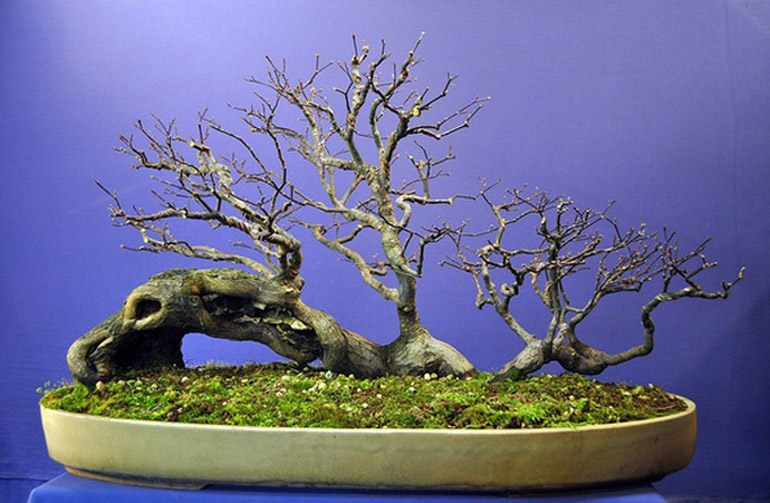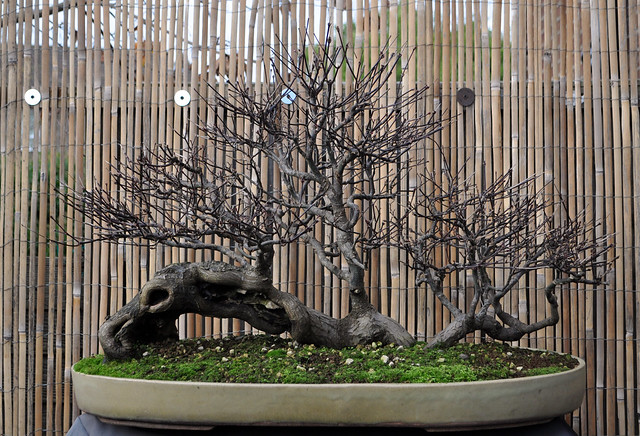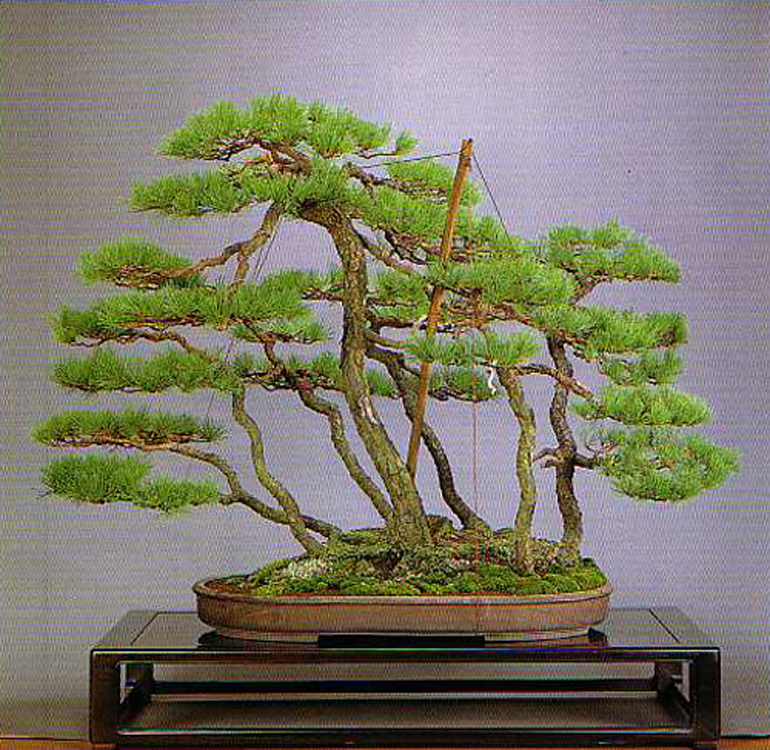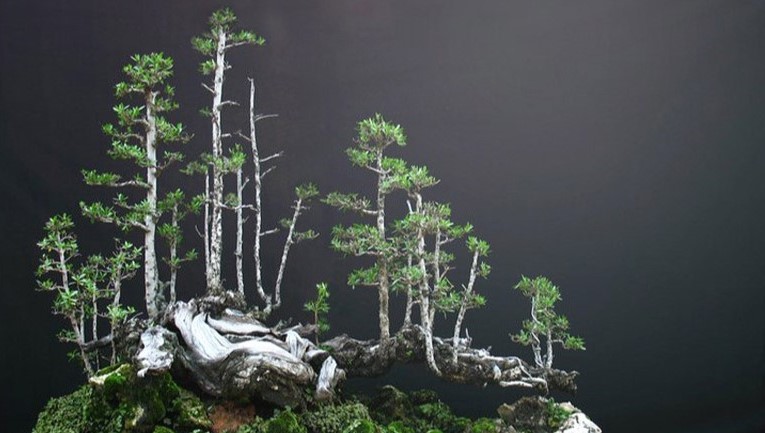The ancient art of Bonsai, replete with painstaking precision and an idyllic representation of nature’s grandeur, throws open a realm of intriguing styles, amongst which, Ikadabuki, or the raft style, holds a unique charm. The perfect rendition of a natural disaster’s aftermath into a piece of art, Ikadabuki encapsulates the resilience and beauty of nature. Our exploration begins with delving into the enchanting history and evolution of this style, closely analyzing its symbolism in the larger Bonsai cosmos. A further understanding of its distinctive characteristics unravels the culture permeated so deeply in this age-old Japanese tradition. Coupled with this, an excursion through the processes, techniques, and the critically curated art of creating an Ikadabuki Bonsai awaits you as we journey through this discourse.
Understanding the Fundamentals of Ikadabuki
History and Origin of Ikadabuki
The Ikadabuki is a bonsai style that is also known as the “raft style”. This form of bonsai originated from Japan, with roots dating back to the ancient times when artists sought to mimic the natural formations in miniature form. Akin to a raft floating on water, the Ikadabuki style features a horizontal tree formation, with multiple vertical branches emerging directly from the main trunk, aspiring to model a perception of an ancient forest living on a fallen log.
Popularity and Symbolism in Bonsai Art
Due to its unique aesthetic appeal, the Ikadabuki bonsai style has gained widespread recognition and popularity. It embodies the essence of resilience and survival, symbolizing the inherent strength of nature to overcome adversity and thrive even in the harshest of conditions. This seeming simplicity partnered with its profound significance continues to enthrall bonsai enthusiasts worldwide.
Unique Characteristics of Ikadabuki Style
Ikadabuki is characterized by a single main trunk that’s typically placed horizontally or at a slight angle which represents a fallen tree. The protruding branches are trained to grow vertically, depicting new trees. Essentially, in Ikadabuki, “one tree becomes many”, creating an impression of a group of trees or a mini forest from a single bonsai. This style reflects the adaptive capacity of nature, how life can grow and prosper from adversity.
Intricacies of Ikadabuki Bonsai Technique
The successful creation of an Ikadabuki bonsai requires an appreciation for the natural world, patience, and meticulous caring. The original plant must be healthy and flexible enough to allow for manipulation and positioning. Often, a deciduous tree with small leaves is chosen for this style. A flat or “raft” root system is essential as it allows for the creation of the horizontal ‘fallen log’ illusion. The branches are then carefully cultivated and trained to grow upright, personifying new trees that have sprung from the fallen tree.
Furthermore, continuous maintenance is crucial in keeping the intended aesthetic. This involves consistent watering, pruning, and sometimes wiring to ensure the branches maintain their upright growth.
Bonsai Pots for Ikadabuki Style
Choosing the correct pot is also a vital aspect of Ikadabuki style. Pots used for this kind of bonsai style are usually shallow and wide, allowing the tree to fully express the horizontal expansion. The pot’s color, size, and texture should also complement the bonsai’s aesthetic and not divert attention from its compelling tale of resilience and survival.
The art of growing Bonsai in the Ikadabuki, or raft style, calls for an in-depth understanding, patience, and a connection to nature as it beautifully demonstrates the delicate balance achieved through skillful intervention blended with natural authenticity.

Processes and Techniques in Creating Ikadabuki
Choosing the Perfect Tree for Ikadabuki
To truly delve into the art of Ikadabuki, one of the primary tasks involves choosing the right tree. This traditional Japanese style favors tree species which naturally grow low to the ground or are known for producing “suckers,” which are new shoots emerging from the base. Species such as Lily Pily, Japanese Maple, and Trident Maple are often chosen. A fully grown tree featuring a robust trunk and healthy branches can lead to outstanding outcomes in the Ikadabuki style.
Understanding the Role of Tools in Initial Styling
Proper tools play an essential role in creating an Ikadabuki bonsai. Secateurs are required for pruning branches and roots. A concave cutter is necessary for removing branches, leaving behind a small indented cut that heals with little or no scar. Wire cutters are another essential tool to cut the wires when the bonsai is styled. Knob cutters help in cutting heavy branches. These tools ensure accuracy and efficiency in the initial styling phase of Ikadabuki.
Pruning Techniques in Ikadabuki
Pruning is a critical process in shaping the bonsai tree. The technique involves reducing the parts of the tree, including branches, buds, or roots, to limit the growth. In Ikadabuki, the aim of pruning is to establish a flat line of trees appearing as a single unit but still maintaining the individuality of each tree. Pruning should be done meticulously to avoid damaging the tree. Buds should be pruned in the direction of the desired growth.
Applying the Raft Style Layout
After selecting and pruning the tree, the next step is to lay it down on its side, creating a raft-like aesthetic. The original tree’s branches start serving as new individual trees, and strong roots grow from the section of the trunk that’s in contact with the soil. The original trunk then becomes a connecting subterranean root system. Ideally, the new saplings are arranged in a straight or slightly zigzag line, resembling a natural raft form.
Wiring: Creating the Illusion of Age
Wiring is vital in shaping bonsai trees, especially in Ikadabuki, where the goal is to give the appearance of age. Specific tools are used, such as aluminum or copper bonsai wire, and the correct technique involves wrapping the wire at a consistent angle around branches. Wiring allows the artist to meticulously manipulate and position each tree to create the illusion of a windswept group of trees that have aged together on a raft. The procedure requires delicate manipulation to avoid harming the tree.
Nurturing and Maintaining Ikadabuki Bonsai
The key to maintaining the artistry of an Ikadabuki bonsai is consistent and meticulous care. Watering, fertilizing, and re-potting practices must be knowledgeable and precise. It’s also essential to monitor the bonsai’s response to pruning and wiring techniques continually. Regular observation helps detect any signs of decay or disease so they can be addressed promptly. Lastly, the bonsai tree requires patience and devotion to build resilience, mirroring the time-worn aspect of nature.
Through diligent effort and a deep comprehension of the complex Ikadabuki technique, one can create this remarkable bonsai style known for symbolizing distinctive natural landscapes.
Comparing Ikadabuki and Other Bonsai Styles

Exploring the Differences Between Ikadabuki and Other Bonsai Styles
Labeled as the “Raft Style,” the Ikadabuki aesthetic embodies the visual narrative of multiple trees sprouting from a fallen one. The horizontal branches of the collapsed tree root themselves and generate vertical trunks, emanating the visual of a raft floating on tranquil water. This portrays the remarkable endurance of nature and the circle of life, showcasing how fallen trees give birth to new ones. This design often encompasses elements of uniformity and alignment with a stream of secondary trunks all extended in the same orientation, thereby, maintaining a rhythmic flow throughout the artwork.
Comparing Ikadabuki with Kengai (Cascade Style)
In contrast to the uniformity of Ikadabuki, Kengai, or cascade style, represents the struggle of trees growing on steep cliffs or over water. This style involves a bonsai bending sharply downward, often extending below its container’s base, imitating trees that are forced downwards by the weight of snow or lack of sunlight. This style thus represents resilience and adaptability, offering a striking aesthetic view with its cascading form.
Comparing Ikadabuki with Chokkan (Formal Upright Style)
The Chokkan or formal upright style, another bonsai tradition, contrasts with Ikadabuki’s horizontal lines. Chokkan seeks to represent the perfect tree with a straight and vertical trunk, tapering smoothly from base to top. The branches shorten progressively up the tree, reflecting a symmetry and order often found in nature’s strongest and most mature trees. Unlike the cooperative community represented in Ikadabuki, Chokkan highlights a single tree’s majestic strength and grandeur.
Comparing Ikadabuki with Shakan (Slanting Style)
Shakan, or the slanting style, is a middle ground between the upright Chokkan and horizontal Ikadabuki. This bonsai aesthetic reflects the plant’s struggle and resilience in combating elements such as wind or sun direction. The primary trunk leans to one side but remains unbroken, suggesting natural imperfections or environmental factors forcing the tree to adapt. While Ikadabuki primarily represents a harmonious cluster of trees, Shakan presents a single tree’s struggle and resilience.
Delving into the Beauty and Complexity of Bonsai: An Introduction to Ikadabuki
Bonsai art in all its variations encapsulates the essence of nature’s beauty. Ikadabuki or Raft Style Bonsai, with its horizontal growth pattern and sense of unity among branches, demonstrates nature’s resilience and adaptability like no other. Other styles such as Kengai and Shakan portray the hard-hitting struggle for survival under unforgiving circumstances, and Chokkan exemplifies the grandeur of natural symmetry. The unique skills and artistic perception needed to transform broad landscapes into miniature versions push the limits of aesthetic expression in every bonsai piece.
Maintenance and Care for Ikadabuki Bonsai

Mastering the Care for Ikadabuki: A Guide to Maintenance and Nurturing
Caring for your Ikadabuki bonsai is a continuous commitment that requires careful attention to factors like watering, sunlight exposure, pruning, and re-potting. The watering process is particularly crucial, as an excess can lead to root rot while insufficient water could leave the tree dehydrated. An essential practice is to keep the soil reasonably moist, providing comprehensive watering as it begins to dry.
Sunlight Exposure and Trimming for Ikadabuki Bonsai
Sunlight exposure also plays a vital role in the health of an Ikadabuki bonsai. These trees need a lot of light for photosynthesis, so they should be placed in an area where they can receive indirect but bright light for most of the day. Trimming, on the other hand, is required to maintain the shape and design of your bonsai. Regular trimming keeps your bonsai looking its best and encourages new growth by removing any weak or dead branches.
Re-potting and Pest Control Procedures
The process of re-potting an Ikadabuki bonsai should typically be carried out every two to five years depending on the age and species of the tree. Re-potting is essential for allowing the roots to continue growing and to replenish the soil’s nutrients. In terms of pest control, remember that bonsai trees are prone to infestations. Regular inspection of your bonsai for pests or diseases is necessary. Treat any signs of pests immediately to prevent spread and damage to your bonsai.
Seasonal Care Routine for Ikadabuki Bonsai
Seasonal care is another crucial aspect when taking care of an Ikadabuki bonsai. The needs of the bonsai change with each season, which means care routines must be adjusted accordingly. During spring, significant growth can be expected, so regular trimming is necessary to maintain the tree’s shape. Fertilizer must also be applied during this period to ensure adequate nutrition for your tree.
Summer requires careful attention to watering, as the heat can quickly dry out the soil. Fall is usually the time to prepare your bonsai for the upcoming winter. Reduce the watering frequency and stop feeding to allow the bonsai to enter dormancy. It’s crucial to protect the tree from freezing temperatures during winter, as most bonsai species are cold-sensitive.
By understanding and implementing these essential maintenance and care activities for an Ikadabuki bonsai, owners can ensure their tree remains healthy, vibrant, and attractive throughout every season. It’s a labor of love that pays off beautifully in the form of a thriving Raft Style bonsai.
Stepping back from the creation and comparison, the meticulous care involved in nurturing an Ikadabuki Bonsai is an art in itself. The journey doesn’t end at just crafting a living piece of art, but continues in a life-long commitment towards the care and maintenance of this nature’s marvel. It demands one to be observant, understanding the unique needs of the tree, with a keen focus on the tree’s health and aesthetic appeal. After all, the beauty of Ikadabuki Bonsai is a reflection of the enduring dance between nature’s resilience and human nurturing, a partnership of growth that is just as rewarding as the end creation. As we immerse in this world of Bonsai, may this exploration of the Ikadabuki style offer not only an understanding of its intricacies but also a renewed appreciation for the meticulous craft of this enduring art form.
